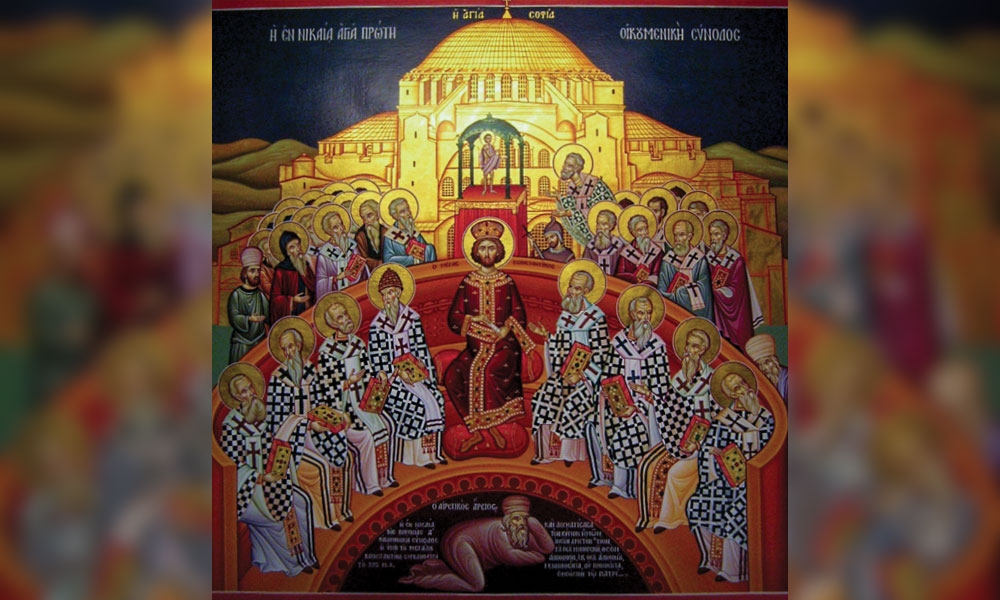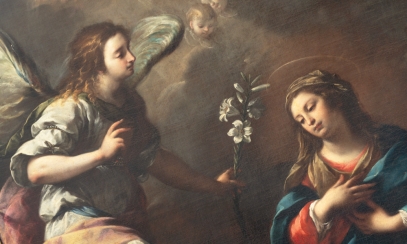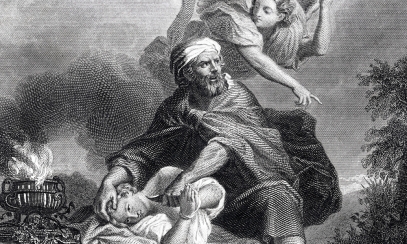
Church and state: Man and God
Getting your Trinity Audio player ready...1,700 years ago, an incredible gathering took place in the city of Nicaea in present-day Turkey. It came to be known as the First Ecumenical Council of Nicaea. Our celebration of this great assembly will occupy the next several articles in FAITH Magazine.
1,700 years ago, an incredible gathering took place in the city of Nicaea in present-day Turkey. It came to be known as the First Ecumenical Council of Nicaea. Our celebration of this great assembly will occupy the next several articles in FAITH Magazine.
Of course, the easiest solution is to claim that Jesus was less than God but filled with divine power and authority. This also would keep God more spiritual and not mixed up with messy matter. But this is not what we believe. An additional complication here was that Greek was the language of the eastern part of the empire and Latin of the western part and these two languages did not always agree on terminology.
After centuries of opposition and even, at times, violent persecution, the Church was now at peace. The Emperor Constantine had proclaimed toleration of the Christian religion in 313 AD. Constantine became sole emperor in 324, but the following year there were clear problems. Chief among them was how exactly is Jesus God, but different from the Father, and yet there is still only one God. Perhaps with the end of persecutions, there was now time and energy for internal disputes, which had been going on for many years, to surface and to take center stage.
Around 320 AD, a priest in Alexandria, Egypt, named Arias, probably about 60 years old, bright and a very good preacher, addressed these matters. He promoted the theological truth of there being only one God, something that is simply indivisible and unique. Thus, the Word of God was only a creation of God, such that, as Arians would say, “There was a time when he was not.” Now this creation, coming into Jesus, clearly raised Jesus above normal humanity, but he was not God himself. Soon there was chaos in Alexandria and the bishops gathered under the leadership of Bishop Alexander to exile this preacher. He fled to Nicomedia in present-day Turkey, where he found many supporters. This is what Constantine found when he united the empire in 324. He chastised Bishop Alexander and Father Arius for engaging in minor arguments and urged them to reconcile. Without success, the emperor then summoned bishops from his empire to Nicaea to resolve this dispute. Imagine that! The emperor was the convener. Talk about a mix of Church and state!
Records for the gathering are not as complete as we would like. It seems that from 220 to 300 bishops participated, though the symbolic number of 318 (Gn 14:14) was later used. The aged Pope Sylvester sent two priests as his delegates; some bishops who had suffered torture and persecution were there such as Paphnutius of Egypt, whom Constantine kissed out of reverence for such a holy witness to the faith; even Nicholas of Myra, the future Santa Claus, attended.
The scene was set for a development in our understanding of the Trinity that would define exactly what we believe as Catholics. Next month, we will discover exactly what was agreed on and how the, sometimes heated, discussions progressed.



